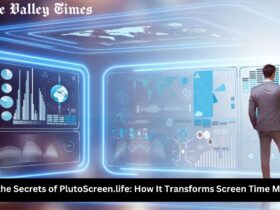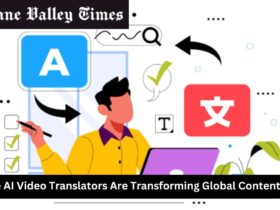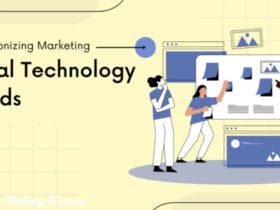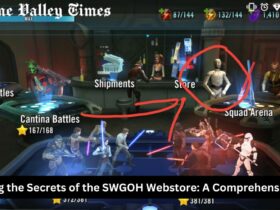In recent years, remote work has transformed from a niche arrangement into a mainstream mode of employment for millions of professionals worldwide. With this shift, companies and individuals alike have sought ways to maintain, or even enhance, productivity despite the physical distance separating team members. One powerful tool that has emerged as a game-changer in this context is the Video Presentations.
The Rise of Remote Work
Remote work offers numerous benefits, such as increased flexibility, reduced commuting time, and the ability to hire talent from a broader geographic pool. However, it also presents significant challenges, particularly in terms of communication and collaboration. Traditional face-to-face meetings, spontaneous brainstorming sessions, and casual office interactions are no longer possible, necessitating new strategies to keep teams connected and engaged.
The Power of Video Presentations
Video presentations are uniquely suited to address many of the challenges posed by remote work. By combining visual and auditory elements, they can convey information more effectively than text-based communications alone. Here are some key ways video presentations can enhance remote work efficiency:
1. Enhanced Clarity and Engagement
Video presentations allow for the inclusion of visual aids such as charts, graphs, images, and animations, which can make complex information more understandable. This multimodal approach caters to different learning styles, ensuring that all team members can grasp key concepts quickly and accurately. Additionally, the dynamic nature of video can capture and hold viewers’ attention more effectively than static documents.
2. Consistent Communication
In a remote work environment, ensuring that everyone receives the same information is crucial. Video presentations provide a consistent message that can be viewed multiple times. This is particularly useful for training sessions, project updates, and company-wide announcements. Team members can revisit the presentation whenever they need a refresher, ensuring that important details are not forgotten.
3. Time Efficiency
Creating a well-structured video presentation can save time in the long run. Instead of scheduling multiple meetings to convey the same information to different groups, a single video presentation can be shared with the entire team. This not only reduces the number of meetings but also allows team members to view the presentation at their convenience, promoting flexibility and time management.
4. Improved Collaboration
Video presentations can serve as a focal point for collaborative efforts. By sharing a video presentation that outlines a project’s goals, timeline, and deliverables, team leaders can ensure that everyone is on the same page. This can facilitate more productive discussions during virtual meetings and provide a clear reference point for ongoing work.
5. Professional Development
Remote work can sometimes feel isolating, with fewer opportunities for spontaneous learning and professional growth. Video presentations can bridge this gap by offering a platform for knowledge sharing. Team members can create and share presentations on topics within their expertise, fostering a culture of continuous learning and development.
Creating Effective Video Presentations
To maximize the benefits of video presentations, it’s important to approach their creation thoughtfully. Here are some tips for crafting compelling and effective video presentations:
1. Define Your Purpose and Audience
Before creating a video presentation, clarify its purpose and identify your target audience. Are you providing a project update, conducting a training session, or sharing company news? Understanding your audience’s needs and expectations will help you tailor your content accordingly.
2. Organize Your Content
Structure your presentation logically, with a clear introduction, body, and conclusion. Break down complex information into digestible segments and use visual aids to reinforce key points. Ensure that each section flows smoothly into the next, maintaining a cohesive narrative throughout.
3. Keep It Concise
Attention spans can be shorter in a remote work setting, where distractions are plentiful. Aim to keep your video presentation concise, focusing on the most important information. If necessary, create a series of shorter videos rather than one long one to keep viewers engaged.
4. Use High-Quality Visuals and Audio
The quality of your visuals and audio can significantly impact the effectiveness of your presentation. Use high-resolution images, clear graphics, and professional animations to enhance your message. Ensure that your audio is crisp and free from background noise, as poor sound quality can be distracting.
5. Engage Your Audience
To keep your audience engaged, incorporate interactive elements such as polls, quizzes, or Q&A sessions. Encourage viewers to participate actively, and address their questions and comments in real-time or through follow-up communications.
6. Include a Call to Action
Conclude your presentation with a clear call to action. Whether you want your audience to provide feedback, complete a task, or attend a follow-up meeting, make sure your instructions are specific and actionable.
Tools for Creating Video Presentations
There are numerous tools available that can help you create professional video presentations with ease. One such tool is a video presentation maker that offers a user-friendly interface and a wide range of features to enhance your videos.
Conclusion
As remote work continues to evolve, leveraging the right tools and strategies is essential for maintaining productivity and fostering collaboration. Video presentations offer a powerful solution to many of the challenges faced by remote teams, providing a dynamic and engaging way to communicate information. By incorporating video presentations into your remote work toolkit, you can enhance clarity, improve collaboration, and save valuable time.













Got a Questions?
Find us on Socials or Contact us and we’ll get back to you as soon as possible.